
Chess Problems
Chess problems—to some, this could mean "I make too many blunders!" or "I am terrible in endgames," but there is another meaning for chess problems as well. Let's find out what chess problems are in the context of learning, training, and teaching.
What Is A Chess Problem?
A chess problem is a chess position (usually given in a diagram) that tests a player's ability to find the correct solution. Chess problems almost always have the goal or task labeled clearly, and the level of difficulty varies greatly. The goal could be something as simple as "White to move and checkmate in one," or as difficult as "Black to move and mate in 20 (or more)."
The purpose of chess problems is to strengthen a player's ability to calculate and recognize patterns as well as to enhance their overall chess vision. Problems are often solved independently and are also used by teachers and coaches to train students.
Let's take a look at an easy chess problem. In the following chess puzzle, it is White to move and checkmate in one move:

There are many possible moves in this position for White, but just one move delivers checkmate: Qh5#. Chess problems aren't about checkmates alone and can also have the goals of winning material. In an example of this type of chess puzzle, it is Black to move and win material:
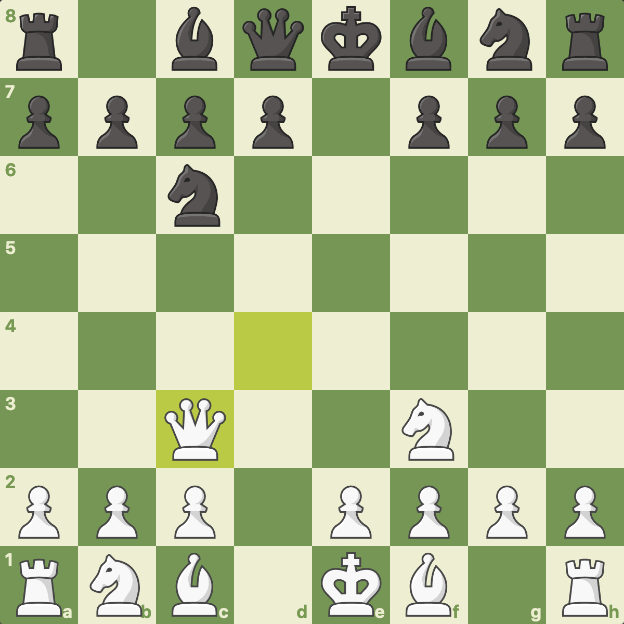
Again, there are many moves for Black, but only Bb4 wins material. Bb4 pins the white queen, winning material for Black.
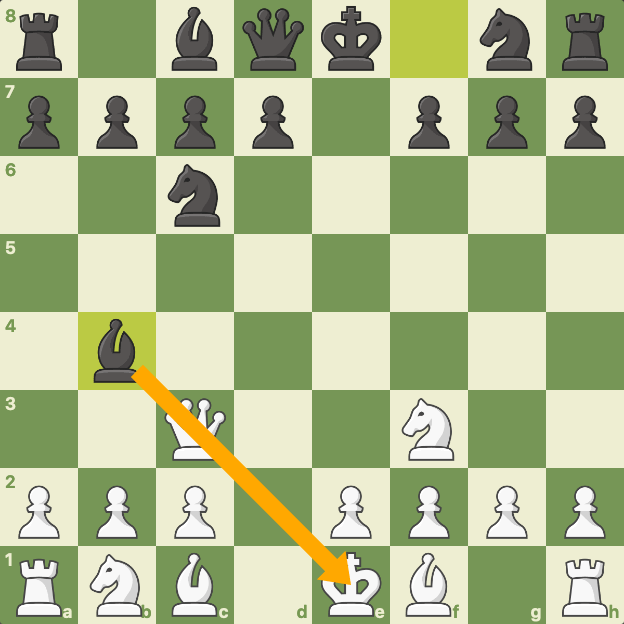
There are different types of chess problems, but the vast majority of them fall into one of two categories: chess puzzles or compositions.
Chess Puzzles
Chess puzzles are the most common type of chess problem that you see. They often use position examples from real games and generally show more standard types of positions (compared to most compositions). Puzzles are meant to emulate real-game situations.
In this example of a simple chess puzzle, it is White to move and win material:
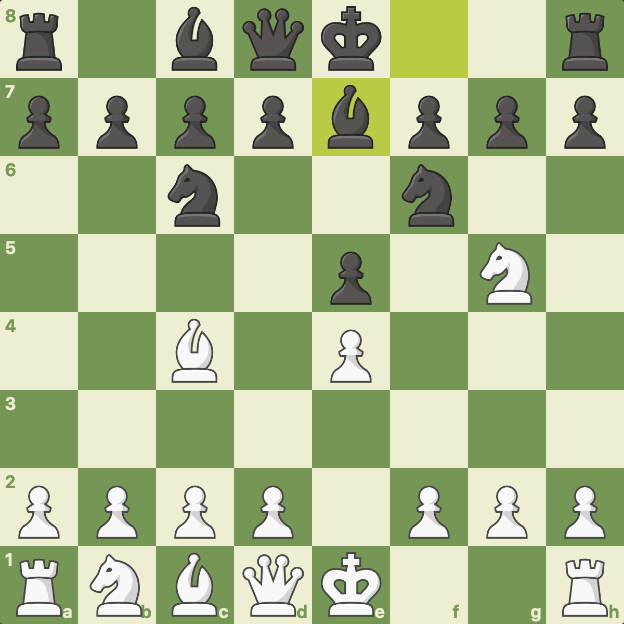
There are two moves that win material in this position, but Nxf7 that wins the black queen is better than Bxf7+.
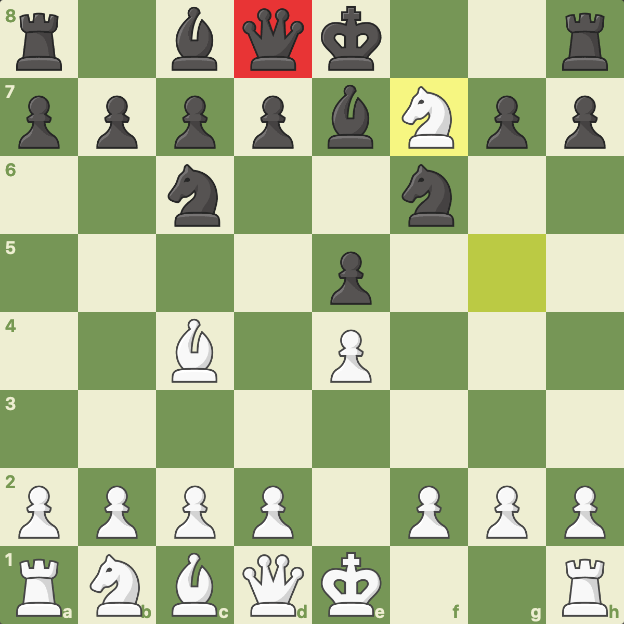
You can find puzzles on Chess.com by going to our puzzles learning section, where you can select from a large selection of puzzle types and themes in a relaxed learning environment that is unrated. You can also select a rated version that gives you a Chess.com puzzles rating!
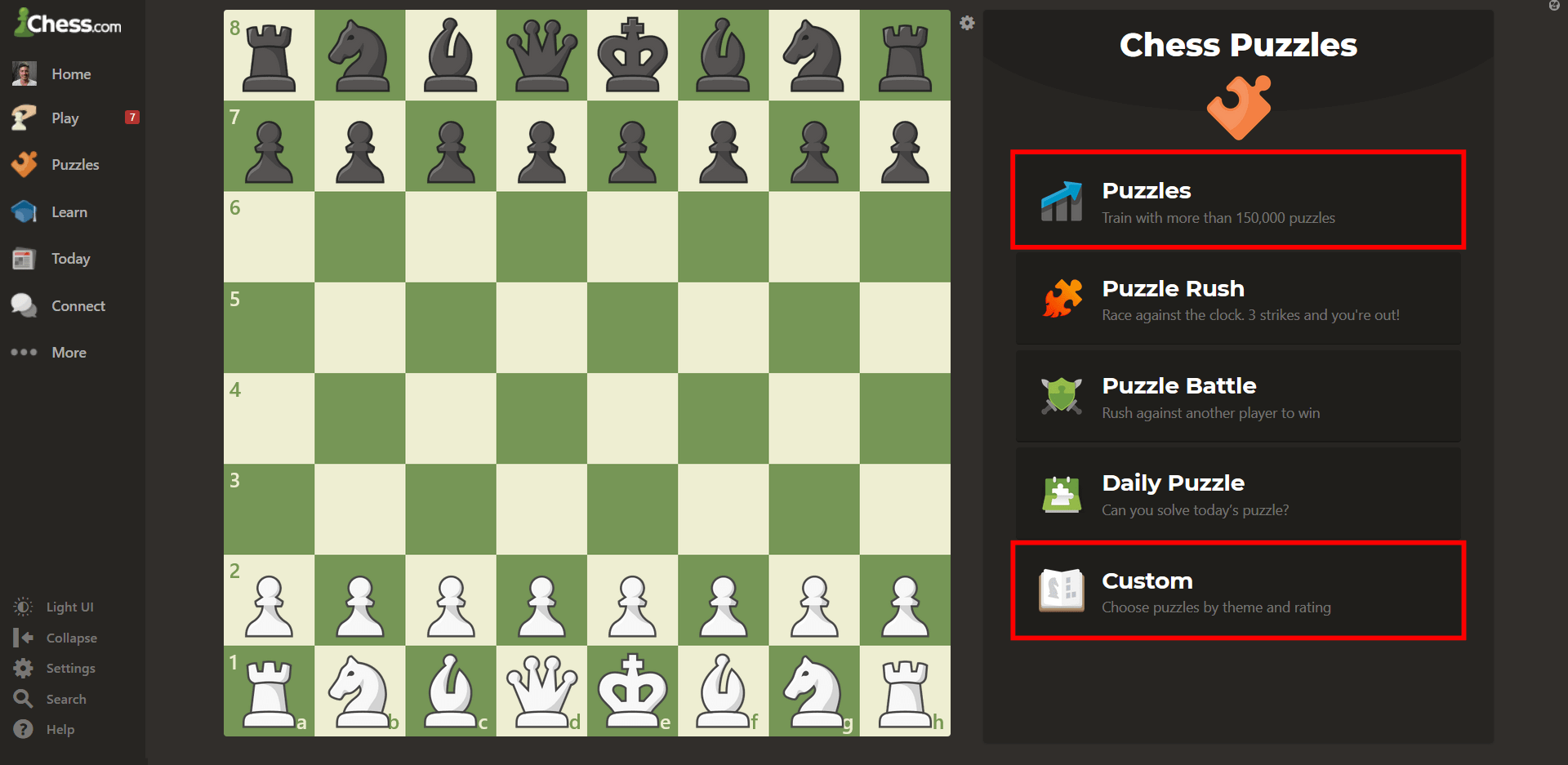
Chess.com has taken puzzles to another level with the introduction of recently added features Puzzle Rush and Puzzle Battle. In Puzzle Rush you solve puzzles with a time control (currently three or five minutes) or in survival mode (no time control). You solve as many puzzles as you can until the time runs out or until you miss three puzzle solutions.
In Puzzle Battle you face an opponent to see who can solve the most puzzles in a limited amount of time. As you can see, there are many ways to interact with puzzles on Chess.com.

Chess Compositions
Chess compositions are problems that have been composed or created but are not from actual games. In general, composed problems are considerably more difficult than a typical puzzle and often contain features or entire positions that wouldn't be plausible or normal in a real game.
For example, here is a chess composition by CM Brandon Xia with White to move and checkmate in four moves:

As you can see, the chance of this position happening in a real game is virtually zero. However, solving these types of problems has tremendous value as they make you think and create new thinking patterns. Here is the solution to the above composition, which is difficult to solve. It starts with Nd3.
A common grievance or misconception of composed problems is something like the following: "Composed studies are artificial. They have little to no relation to real chess." In the introduction to IM Cyrus Lakdawala's upcoming book on chess compositions, Rewire Your Brain, he gives his thoughts on this topic by stating, "If you master solving composed works, you will find the combination or hidden plan in your games. You will not get disoriented as easily in irrational positions, since irrational is now our new normal."
If you master solving composed works, you will find the combination or hidden plan in your games. You will not get disoriented as easily in irrational positions, since irrational is now our new normal.
— IM Cyrus Lakdawala
In an example of an extremely difficult chess composition by Otto Blathy, it is White to move and mate in 10.
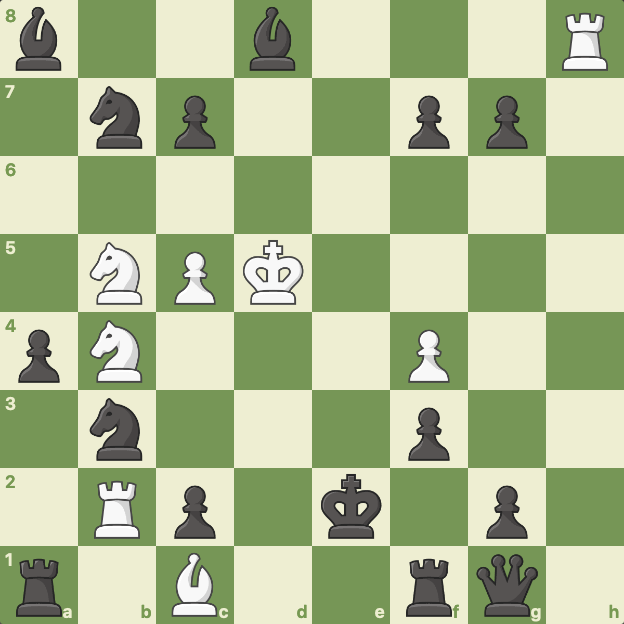
Pretty crazy, right? Only very advanced chess players can solve this, and it requires a lot of time and thought. Here is the solution—10 successive knight moves starting with Nc3+.
Test
Now that you know the difference between the two types of chess problems, let's test your abilities! Here is a tough chess composition created by the chess genius, Paul Morphy, at the age of 10. It is White to move and checkmate in two:
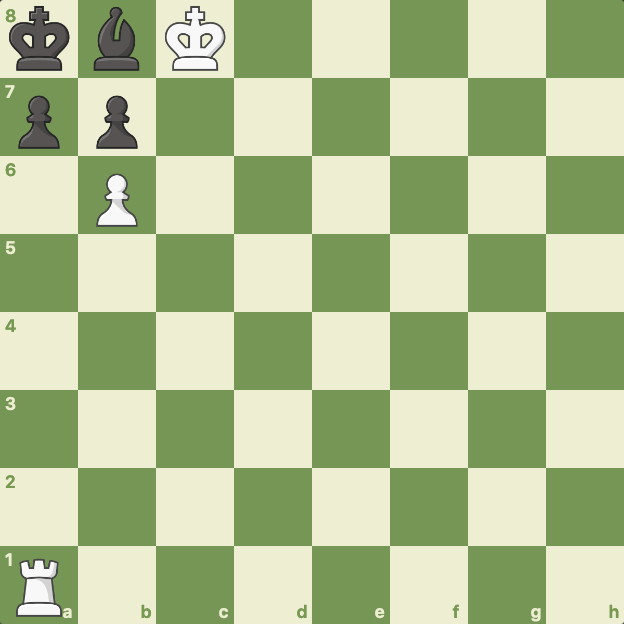
The solution involves the theme of zugzwang, as Black is checkmated after Ra6 on the following move regardless of what they play. If Black captures the rook, then b7# occurs, while if Black moves their dark-squared bishop, then Rxa7# is played next.
Let's try another position in an example of an intermediate to advanced chess puzzle that you are likely to encounter on Chess.com. It is Black to move and win material:
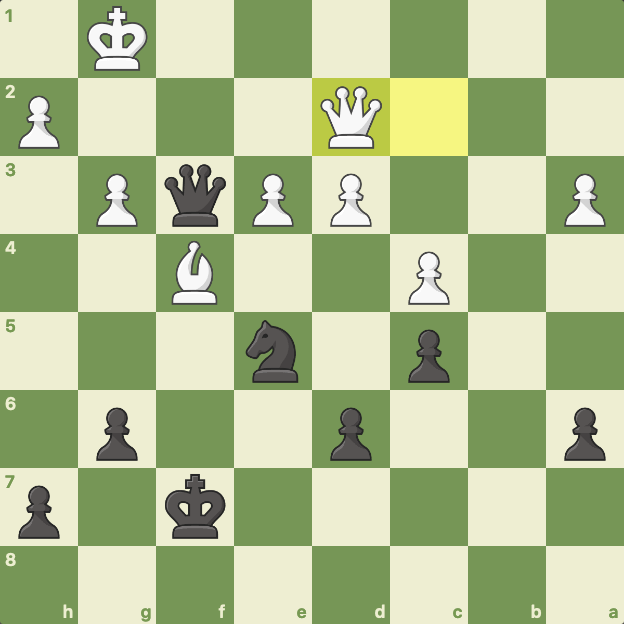
The solution isn't difficult if you recognize that the black knight forks the king and queen on the f3-square, but it takes time to recognize this pattern and find this idea. The answer is Qxf4 followed by Nf3+, which wins a piece for Black.
Conclusion
You now know what a chess problem is, how a chess composition and a chess puzzle are different, how to find chess puzzles on Chess.com, and more! Head over to Chess.com's Puzzles page to test and improve your skills!







